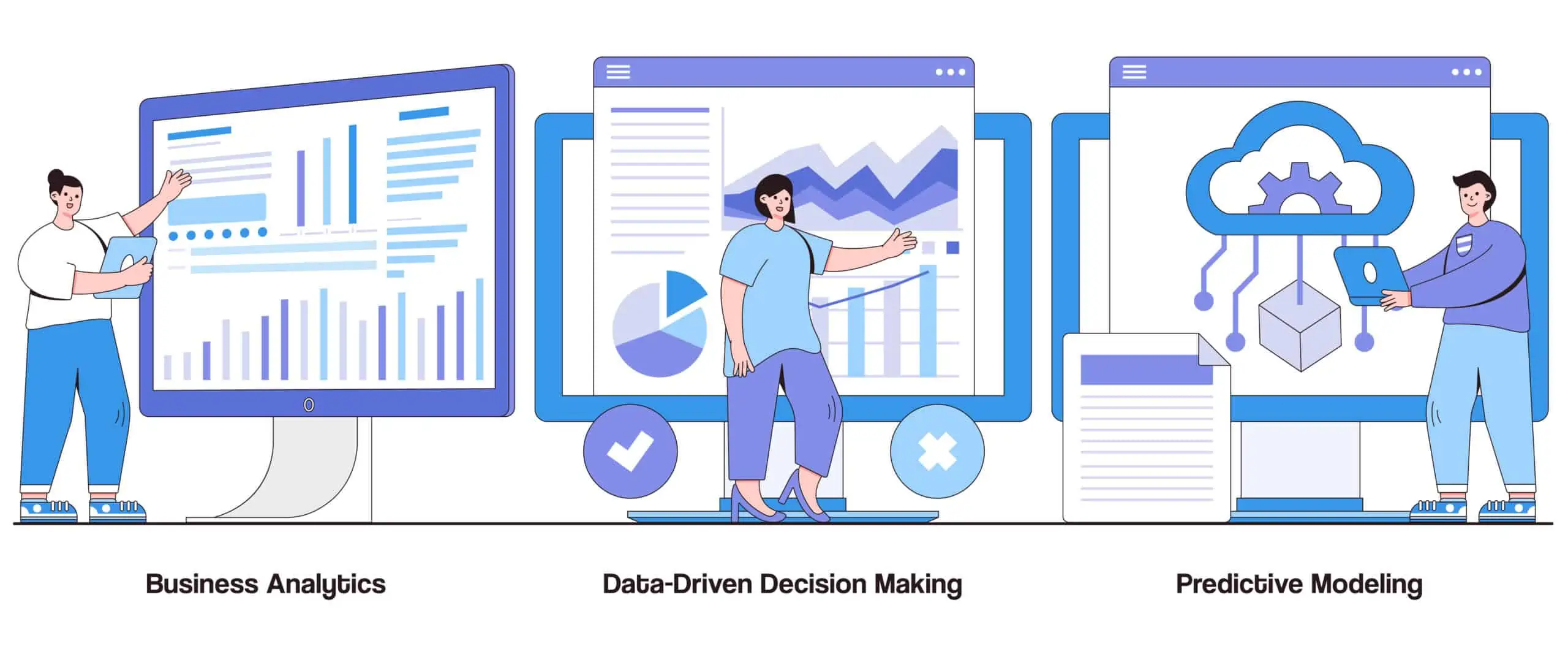Get Insight Into Your Operations With Our Predictive Modeling Software Solutions
We Offer Powerful Software-Driven Solutions for Predictive Analysis that Enable You To:
- Gain insight into your entire process
- Use holistic modeling methods to create highly accurate forecast models
- Identify patterns, recognize bottlenecks before they happen, and predict future outcomes.
- Optimize your business operations for continuous improvement and maximum efficiency.
Predict. Decide. Improve. Get the predictive analytics your business needs – exactly when you need it. Take advantage of MOSIMTEC’s predictive modeling tools.
What is predictive modeling?
Predictive modeling is a technique that combines data analysis and machine learning process to create mathematical models that can be used to predict future events or outcomes based on historical data. This technique entails identifying patterns, relationships, and trends in historical data and then using these patterns to predict future behaviors.
Predictive modeling aims to create a model that can accurately predict or estimate the outcome of a specific event or variable based on known factors or predictors. This is accomplished by using machine learning and statistical learning techniques of predictive modeling. The process of predictive modeling typically involves defining the problem, collecting data, data processing, future selection, model selection and training, model evaluation, model deployment, and model refinement.
Why Does Your Business Need Our Predictive Modeling Techniques?
The predictive modeling process is complex – but the result is simplicity itself. Businesses confront many different continuous variables, each of which can have a large impact on operations and capacity planning. You need a day-to-day solution that factors in each variable, adjusting accordingly to provide robust predictive modeling accuracy.
Gain direct insight into potential problems and understand the path to the best solution. It’s called predictive analytics, and it’s the proven way MOSIMTEC works to make your operations run more smoothly – enhancing your bottom line. Businesses can benefit from predictive modeling techniques in several ways. Improved decision-making, anticipating customer behavior, risk assessment and demand forecasting and inventory management, and resource optimization.
Predictive modeling techniques in general enable businesses to make data-driven decisions, gain a competitive advantage, and improve operational efficiency and profitability.
Predictive modeling can handle complex models by utilizing a variety of techniques and algorithms designed to handle intricate relationships and patterns in data. Below are a few ways predictive modeling deals with complexity.
- Nonlinear relationships
- Feature engineering
- Ensemble methods
- Cross-validation and model evaluation
- Advanced algorithms and architectures
Overall, predictive modeling employs a complex combination of techniques, algorithms, and evaluation methods to handle complexity. By leveraging the above-mentioned approaches, predictive models can effectively capture intricate problems, handle nonlinearity, avoid overfitting, and make accurate predictions in complex datasets and real-world scenarios.
Predictive modeling is critical in supply chain management because it provides insights and predictions that allow for effective decision-making and optimization.
Demand forecasting, inventory optimization, risk management, transportation optimization, supplier performance and selection, pricing and revenue management, and network optimization. Supply chain managers can use predictive modeling to make better decisions, reduce risks, optimize operations, and improve overall business performance. Businesses can improve visibility, efficiency, and responsiveness in supply chain management practices by leveraging historical data, modeling techniques, and advanced algorithms using Predictive Modeling.
Predictive modeling can forecast future demand patterns by leveraging historical data, market trends, and other relevant factors. Some of the key steps involved in using Predictive Modeling to anticipate demand are data collection, data processing, and identifying the most relevant features or predictors that impact demand. Modeling selection, training the model, and model validation are also crucial components in Predictive Modeling.
Businesses can gain insight into demand patterns, detect trends and capture the impact of various factors on demand by leveraging Predictive Modeling techniques. As a result, they can make more informed decisions about production planning, inventory management, pricing strategies, resource allocation, and more.
Predictive Modeling can optimize your business in several ways, leveraging data-driven insights to enhance decision-making, operational efficiency, and overall performance. A few ways Predictive Modeling can optimize your business with improved decision-making, enhanced demand forecasting, optimal pricing and revenue management, supply chain optimization, risk management and fraud detection, and resource optimization.

Testimonials From Our Clients
Success here will be exported throughout the world, changing perceptions, pioneering and opening new markets and saving lives. -DroneAmerica.com
MIKE RICHARDS
Simulation starts where Statistics ends…
BIG FOUR CONSULTING FIRM
Very hands on. You were very interactive and supportive of any questions that popped up during the course.
Pharmaceutical Automation Solutions Provider
The course provided a great overview of all the software as well as a good base to begin building models and refining our skills through repetition. It was exactly what I was looking for.
Deere & Company (John Deere)
We had a good time and learned a lot… Thanks for all your help.
National Institutes of Health (NIH)
Thank you guys for the extraordinary job! Very impressive.
Mining Corporation
Need to know what you are going to do, before you do what you are going to do.
Class I Rail Carrier
Commercial drones will change the way we do our jobs, improve our decision-making and save lives.
Jonathan Downey
Especially taking the variability into account… that’s phenomenal what you guys are doing.
Class I Rail Carrier
It’s the most advanced we’ve seen any customer.